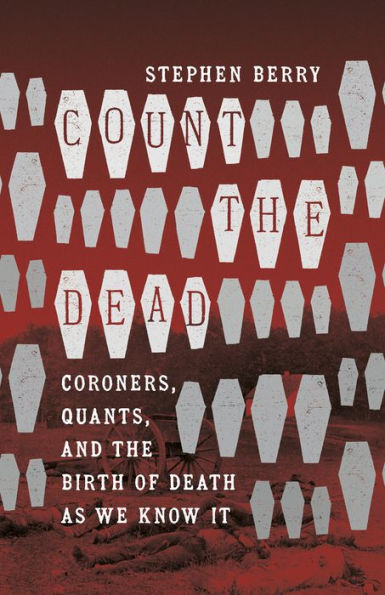The global doubling of human life expectancy between 1850 and 1950 is arguably one of the most consequential developments in human history, undergirding massive improvements in human life and lifestyles. In 1850, Americans died at an average age of 30. Today, the average is almost 80. This story is typically told as a series of medical breakthroughs—Jenner and vaccination, Lister and antisepsis, Snow and germ theory, Fleming and penicillin—but the lion’s share of the credit belongs to the men and women who dedicated their lives to collecting good data. Examining the development of death registration systems in the United States—from the first mortality census in 1850 to the development of the death certificate at the turn of the century—Count the Dead argues that mortality data transformed life on Earth, proving critical to the systemization of public health, casualty reporting, and human rights.
Stephen Berry shows how a network of coroners, court officials, and state and federal authorities developed methods to track and reveal patterns of dying. These officials harnessed these records to turn the collective dead into informants and in so doing allowed the dead to shape life and death as we know it today.
The global doubling of human life expectancy between 1850 and 1950 is arguably one of the most consequential developments in human history, undergirding massive improvements in human life and lifestyles. In 1850, Americans died at an average age of 30. Today, the average is almost 80. This story is typically told as a series of medical breakthroughs—Jenner and vaccination, Lister and antisepsis, Snow and germ theory, Fleming and penicillin—but the lion’s share of the credit belongs to the men and women who dedicated their lives to collecting good data. Examining the development of death registration systems in the United States—from the first mortality census in 1850 to the development of the death certificate at the turn of the century—Count the Dead argues that mortality data transformed life on Earth, proving critical to the systemization of public health, casualty reporting, and human rights.
Stephen Berry shows how a network of coroners, court officials, and state and federal authorities developed methods to track and reveal patterns of dying. These officials harnessed these records to turn the collective dead into informants and in so doing allowed the dead to shape life and death as we know it today.

Count the Dead: Coroners, Quants, and the Birth of Death as We Know It
140
Count the Dead: Coroners, Quants, and the Birth of Death as We Know It
140
Product Details
| ISBN-13: | 9781469667539 |
|---|---|
| Publisher: | The University of North Carolina Press |
| Publication date: | 02/17/2022 |
| Series: | The Steven and Janice Brose Lectures in the Civil War Era |
| Sold by: | Barnes & Noble |
| Format: | eBook |
| Pages: | 140 |
| File size: | 20 MB |
| Note: | This product may take a few minutes to download. |
